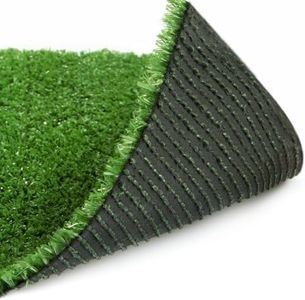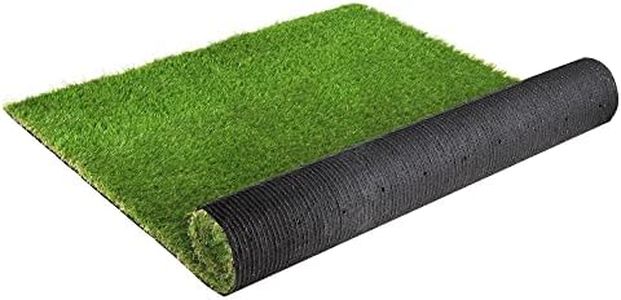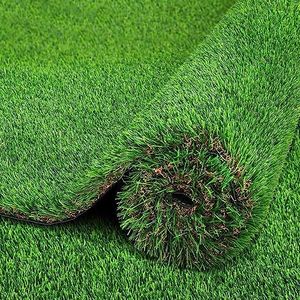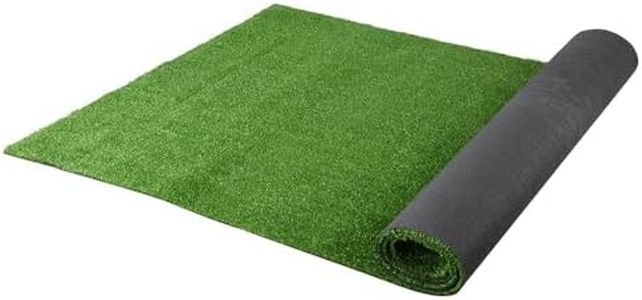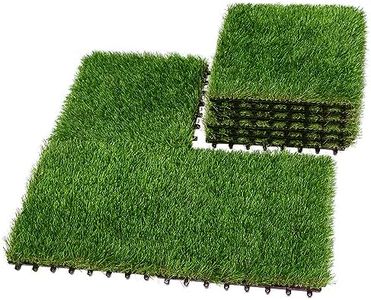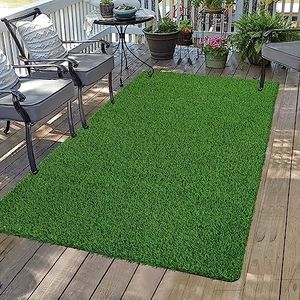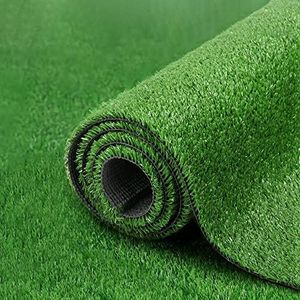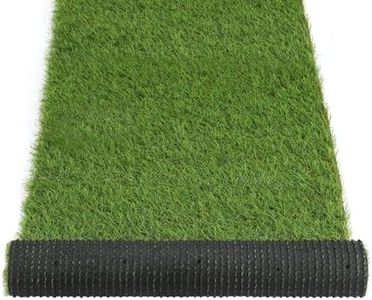We Use CookiesWe use cookies to enhance the security, performance,
functionality and for analytical and promotional activities. By continuing to browse this site you
are agreeing to our privacy policy
10 Best Artificial Grass For Patio
From leading brands and best sellers available on the web.Buying Guide for the Best Artificial Grass For Patio
Choosing artificial grass for your patio can give you a green, tidy look all year round with almost no maintenance. While shopping, it's important to make sure you pick the right type of synthetic grass for your intended use and for the comfort you want. Each product varies in feel, appearance, durability and ease of installation—knowing what to consider will help ensure you get the best match for your patio needs.Pile HeightPile height refers to the length of the artificial grass blades. This is important because it impacts how natural and plush your lawn will look and feel. Blades around 20-30mm usually look most natural for patios and offer a good balance between appearance and practicality. Shorter blades (10-20mm) can look neat and are easier to clean but may not feel as soft to walk on. Longer blades (35mm or more) often appear lush but may flatten quickly in high-traffic spots and can be harder to maintain. Choose a pile height that matches your desired look and how much traffic your patio will get.
Density and Stitch RateDensity describes how tightly packed the fibers are, which affects durability and comfort. A higher stitch rate (more blades per square inch) provides a softer feel and a more realistic turf look, while lower densities may look sparse but can be suitable for decorative areas with less use. For patios where people will walk, sit, or play, choosing a medium to high density will ensure it stands up to regular use and feels pleasant underfoot. For decorative patios, a lower density could save weight and make installation easier.
Backing Material and DrainageThe backing is what holds the artificial grass together and helps with installation stability and water drainage. Good drainage is crucial for patios exposed to rain, so look for a backing with multiple drainage holes or a permeable layer. This will prevent water from pooling and help the area dry faster. If your patio is covered and rarely gets wet, drainage may be less important, but make sure the backing is strong and durable so the grass doesn’t shift or break apart over time.
Color and TextureArtificial grass comes in various shades and blade shapes, from bright green to olive or mixed tones for a realistic look. Texture also varies—from soft and springy to firmer and flatter. A product that combines different colors and blade shapes often looks most natural. Choose the color and texture that matches your personal taste and the overall look you want for your patio. If you want the grass to blend with natural surroundings, opt for a mix of greens or more muted tones; for a playful space, brighter greens could add more vibrancy.
UV ResistanceUV resistance is how well the artificial grass can withstand sunlight without fading or degrading. This is especially important for patios exposed to lots of direct sun. UV-resistant grass stays vibrant and lasts longer, while non-resistant types may become brittle or lose color over time. If your patio is mostly in the shade, this feature is less critical, but in sunny spots, always look for UV-stabilized products.
Ease of InstallationSome artificial grass is easier to cut and fit around patio features or corners, while others may require more effort or professional help. Thicker or heavier grass may need extra tools or adhesives. If you plan to do a DIY installation, look for products labeled as 'easy to install' and check if the product comes with clear instructions. Choose based on your own comfort level with installation and your patio’s layout complexity.
